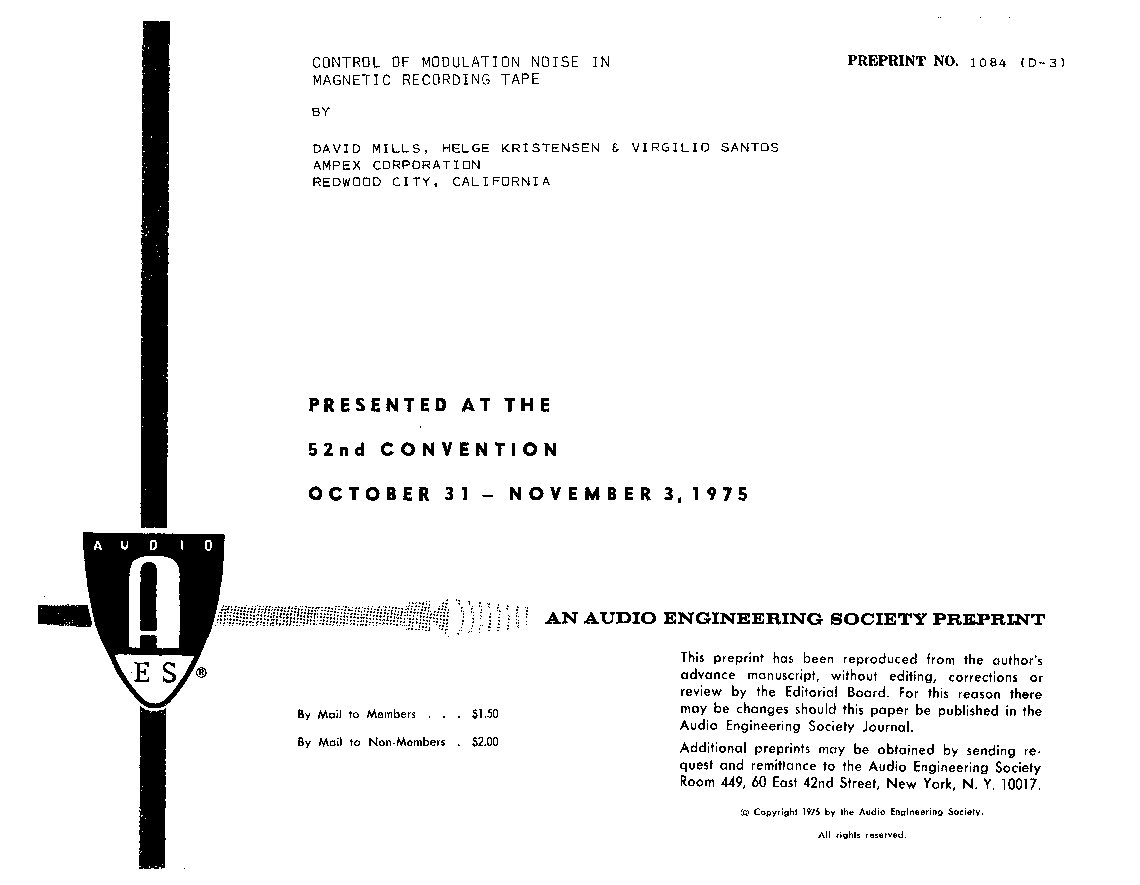Home / Publications / E-library page
You are currently logged in as an
Institutional Subscriber.
If you would like to logout,
please click on the button below.
Home / Publications / E-library page
Only AES members and Institutional Journal Subscribers can download
Factors in the formulation and manufacture of magnetic tape which contribute to the problem of modulation noise have been defined. The effects of formulation variables (oxide, binder and additive types and proportions) are relatively small. The effects of manufacturing variables, particularly calendering, are very large. Improvements in modulation noise of 12 dB were found when the calendering process was optimized. The best calendering process requires the use of homogeneous compliant rolls instead of the composite type previously used. Infrared transmission microscopy was developed as a useful technique for identifying and controlling the calendering-related modulation noise.
Author (s): Mills, David; Kristensen, Helge; Santos, Virgilio
Affiliation:
AMPEX CORPORATION, REDWOOD CITY, CA
(See document for exact affiliation information.)
AES Convention: 52
Paper Number:1084
Publication Date:
1975-10-06
Import into BibTeX
Permalink: https://aes2.org/publications/elibrary-page/?id=2348
(882KB)
Click to purchase paper as a non-member or login as an AES member. If your company or school subscribes to the E-Library then switch to the institutional version. If you are not an AES member Join the AES. If you need to check your member status, login to the Member Portal.

Mills, David; Kristensen, Helge; Santos, Virgilio; 1975; Control of Modulation Noise in Magnetic Recording Tape [PDF]; AMPEX CORPORATION, REDWOOD CITY, CA; Paper 1084; Available from: https://aes2.org/publications/elibrary-page/?id=2348
Mills, David; Kristensen, Helge; Santos, Virgilio; Control of Modulation Noise in Magnetic Recording Tape [PDF]; AMPEX CORPORATION, REDWOOD CITY, CA; Paper 1084; 1975 Available: https://aes2.org/publications/elibrary-page/?id=2348